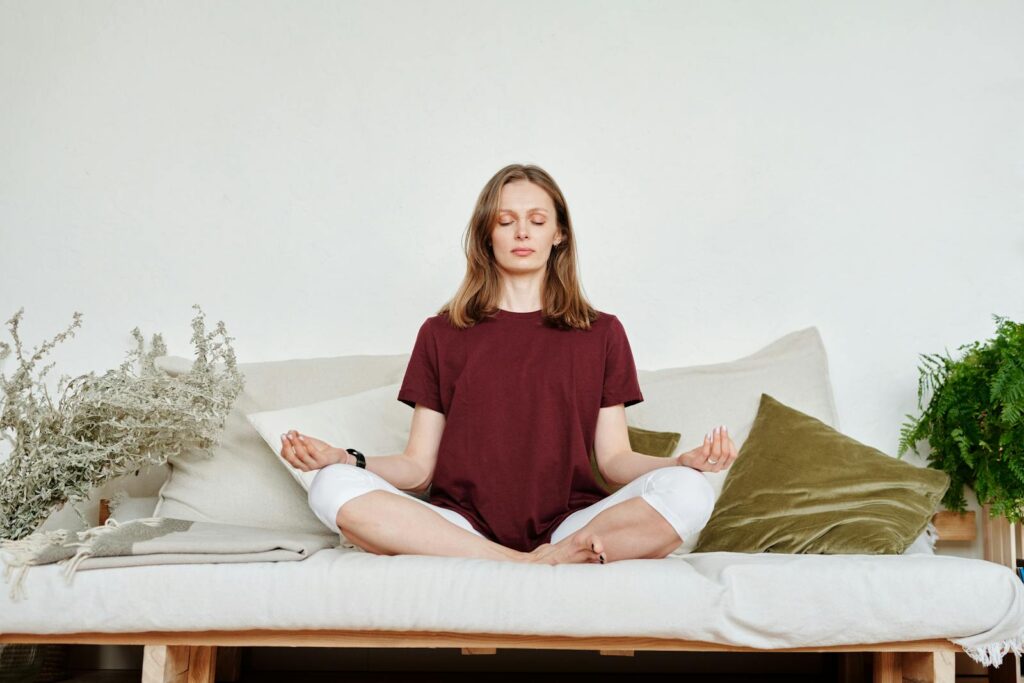Simple Ways to towards Mindful Living
Key Takeaways:
– Mindfulness is the practice of paying attention to the present moment, without judgment.
– It can be practiced through meditation, yoga, and other activities.
– Mindfulness has been shown to have a number of benefits, including reducing stress, improving focus, and boosting mood.
– It is important to find a mindfulness practice that works for you and to stick with it for at least a few weeks to see results.
What is Mindful Living?
Mindful living is a term that refers to the practice of living in the present moment and being aware of your thoughts and feelings.
It is a way of living that is based on the principles of mindfulness meditation, which teaches us to pay attention to our thoughts and feelings without judgment.
When we live mindfully, we are more aware of the present moment and less likely to be caught up in the past or the future.
We are also more likely to be able to deal with stress, anxiety, and depression.
Mindful living can be practiced in a variety of ways, including meditation, yoga, and journaling.
It can also be practiced in everyday activities, such as eating, walking, and talking.
If you are interested in learning more about mindful living, there are many resources available online and in bookstores.
You can also find classes and workshops in your local community.
Benefits of Mindful Living

Mindful living has been shown to have a number of benefits for both physical and mental health.
Some of the benefits of mindful living include:
- Reduced stress and anxiety
- Improved mood and well-being
- Increased focus and concentration
- Improved sleep quality
- Reduced pain
- Improved relationships
- Increased creativity
- Improved decision-making
By incorporating mindfulness practices into our daily routines, we cultivate a deeper sense of awareness and connection with ourselves and others.
As we navigate the ups and downs of life, mindfulness serves as a steady anchor, helping us remain grounded and resilient in the face of challenges.
So, whether it’s taking a few moments to breathe deeply, practicing gratitude, or simply being present in the moment, let’s embrace the power of mindful living to create a life filled with balance, joy, and harmony.
Remember, every mindful step we take brings us closer to a brighter, more fulfilling future.
How to Practice Mindful Living
Mindfulness is a practice that can help you to live in the present moment and be more aware of your thoughts and feelings.
There are many different ways to practice mindfulness, but some of the most common methods include meditation, yoga, and journaling.
Meditation is a great way to learn how to focus your attention and relax your mind.
Yoga is another great way to practice mindfulness.
Yoga can help you to improve your flexibility, strength, and balance, and it can also help you to reduce stress and anxiety.
Journaling is a great way to explore your thoughts and feelings.
Journaling can help you to identify patterns in your thinking and behavior, and it can also help you to develop new ways of coping with challenges.
If you are new to mindfulness, it is important to start slowly and gradually increase the amount of time you spend practicing.
Mindfulness is a lifelong practice, and it takes time and effort to develop the skills necessary to live a mindful life.
Here are some tips for practicing mindfulness:
- Find a quiet place where you can relax and focus.
- Sit in a comfortable position and close your eyes.
- Take a few deep breaths and focus on your breath.
- Notice the sensations in your body.
- Be aware of your thoughts and feelings.
- Let go of any judgments or expectations.
- Stay present in the moment.
Mindfulness is a powerful practice that can help you to live a happier and more fulfilling life.
By practicing mindfulness, you can learn to live in the present moment, be more aware of your thoughts and feelings, and reduce stress and anxiety.
Mindfulness Meditation

Mindfulness meditation is a type of meditation that helps you to focus on the present moment and be aware of your thoughts and feelings.
It is a simple practice that can be done anywhere, and it can have a number of benefits for your mental and physical health.
When you practice mindfulness meditation, you sit in a comfortable position and focus on your breath.
You can either focus on the sensation of the breath as it flows in and out of your body, or you can focus on the sound of the breath as it enters and exits your nostrils.
As you focus on your breath, you will begin to notice your thoughts and feelings.
You may notice that you are feeling happy, sad, angry, or anxious. You may also notice that you are having thoughts about the past or the future.
When you notice your thoughts and feelings, you simply observe them without judgment. You do not try to change them or push them away. You simply allow them to be there.
Mindfulness meditation can help you to:
- Reduce stress and anxiety
- Improve your mood
- Increase your focus and concentration
- Improve your sleep
- Boost your immune system
- Reduce pain
- Improve your relationships
- Find peace and happiness
If you are new to mindfulness meditation, it is a good idea to start with short sessions of 5-10 minutes.
As you get more comfortable with the practice, you can gradually increase the length of your sessions.
Mindfulness meditation is a simple and effective practice that can have a big impact on your life.
If you are looking for a way to reduce stress, improve your mood, and live a more mindful life, I encourage you to give mindfulness meditation a try.
Mindfulness Journaling

Mindfulness journaling is a practice of writing down your thoughts and feelings in a journal in order to increase your awareness of the present moment.
It can be a helpful tool for managing stress, anxiety, and depression, and for improving your overall well-being.
When you journal, you are taking time to slow down and reflect on your experiences.
You are paying attention to your thoughts, feelings, and bodily sensations. You are also taking the time to notice your thoughts and feelings without judging them.
Journaling can help you to:
- Identify your stressors and triggers
- Develop coping mechanisms for dealing with stress
- Increase your self-awareness
- Improve your mood
- Resolve conflicts
- Find solutions to problems
If you are new to journaling, it can be helpful to start by writing for just a few minutes each day.
You can write about anything that comes to mind, but it can be helpful to focus on your thoughts, feelings, and bodily sensations.
You can also write about your goals, dreams, and aspirations.
Over time, you will likely find that journaling becomes easier and more enjoyable.
You may also find that it is a helpful tool for managing stress, anxiety, and depression, and for improving your overall well-being.
Here are some tips for mindfulness journaling:
- Find a quiet place where you can journal without distractions.
- Set aside a specific time each day for journaling.
- Write in a comfortable position.
- Use a pen or pencil that you enjoy writing with.
- Start by writing down your thoughts and feelings without judging them.
- If you get stuck, you can write about your day, your goals, or your dreams.
- Don’t worry about grammar or spelling.
- The goal is to express yourself, not to write a perfect essay.
Mindfulness journaling can be a powerful tool for improving your mental health and well-being.
Mindfulness Apps
There are many different mindfulness apps available on the market, each with its own unique features and benefits. Some of the most popular mindfulness apps include:
- Headspace: Headspace is a leading mindfulness app that offers a variety of guided meditations, breathing exercises, and other mindfulness practices.
- Calm: Calm is another popular mindfulness app that offers a variety of relaxing sounds, music, and meditations.
- Insight Timer: Insight Timer is a free mindfulness app that offers a wide range of meditations, talks, and courses.
- Buddhify: Buddhify is a mindfulness app that is specifically designed for busy people who want to incorporate mindfulness into their daily lives.
When choosing a mindfulness app, it is important to consider your individual needs and preferences. Some factors to consider include:
- The cost of the app
- The features and benefits offered by the app
- The user interface of the app
- The availability of support from the app developer
Once you have considered your individual needs and preferences, you can start to explore the different mindfulness apps that are available.
There is sure to be an app that is perfect for you!
Mindfulness Resources
Here are some resources that can help you learn more about mindful living and how to practice it in your own life:
- Mindful.org is a non-profit organization dedicated to promoting mindfulness and its benefits. They offer a variety of resources, including articles, videos, and workshops.
- The Happiness Trap is a book by Dr. Russ Harris that provides a practical guide to mindfulness and acceptance-based therapy.
- Tara Brach is a psychologist and meditation teacher who offers a variety of online courses and workshops on mindfulness.
These are just a few of the many resources that are available to help you learn more about mindful living and how to practice it in your own life.
With a little effort, you can learn to live more mindfully and enjoy all the benefits that come with it.
Remember, mindfulness is about being present in the moment, being aware of your thoughts and feelings, and letting go of stress and anxiety.
When you live mindfully, you are more likely to experience happiness, peace, and well-being.”







